The task of this exercise is to apply Evolutionary Computation in different projects. The first step consisted on defining a design task, the defining a solution space and finally to deploy Galapagos to search for the most optimal solutions. The design object to be analyzed is a shell structure that has previously been analyzed in terms of a diagrid using Karamba to define its minimum displacement and optimum material utilization. The result of this exercise is that I generate a series of optimized elements which can help to drive the seminar project forward. The objective of using Galapagos is to optimize the structure and finding key factors for designing.
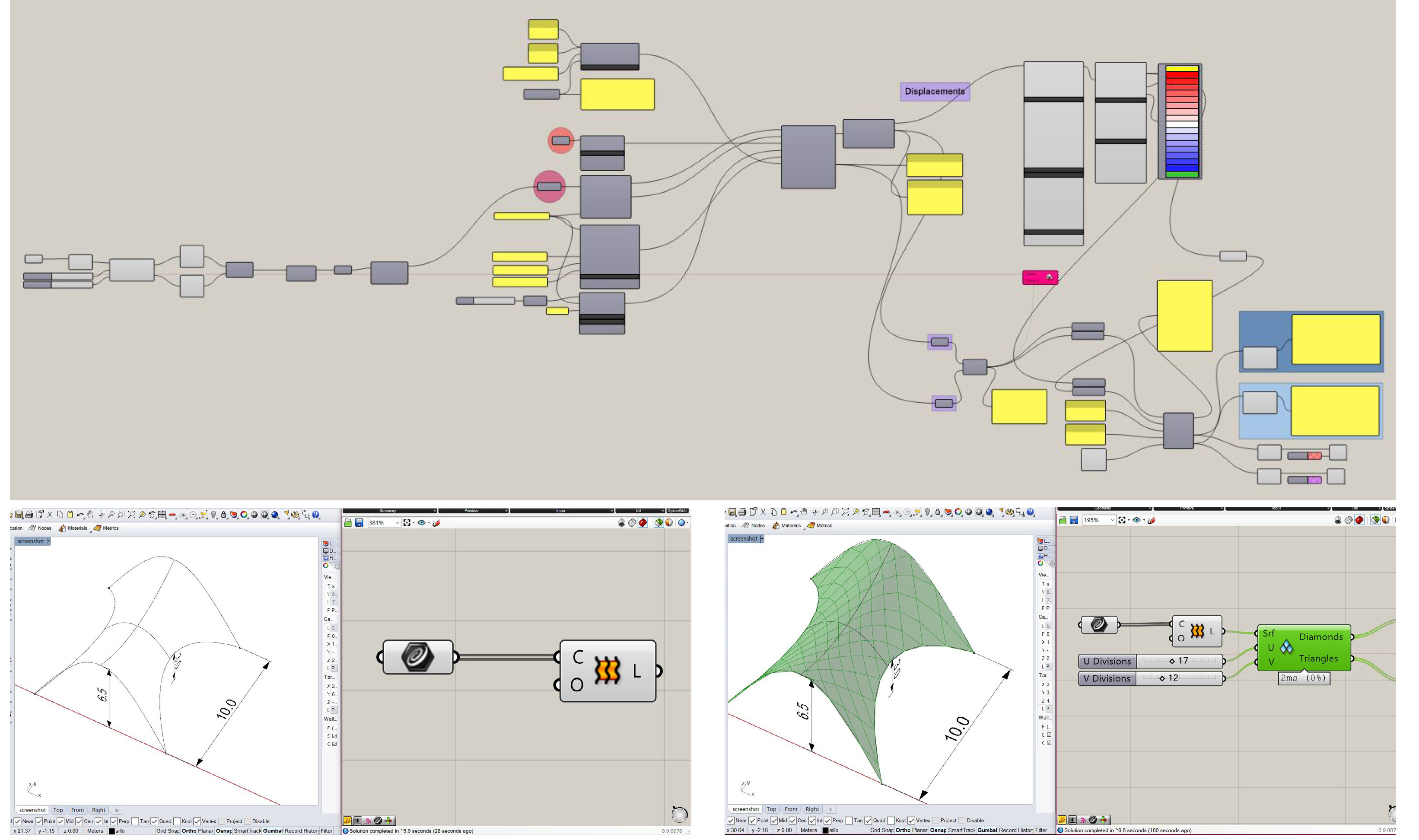
The initial geometry is based on a shell structure with four peripheral arches, which is converted to a diagram using the diamond grid component to transform the shell to a grid-based structure,
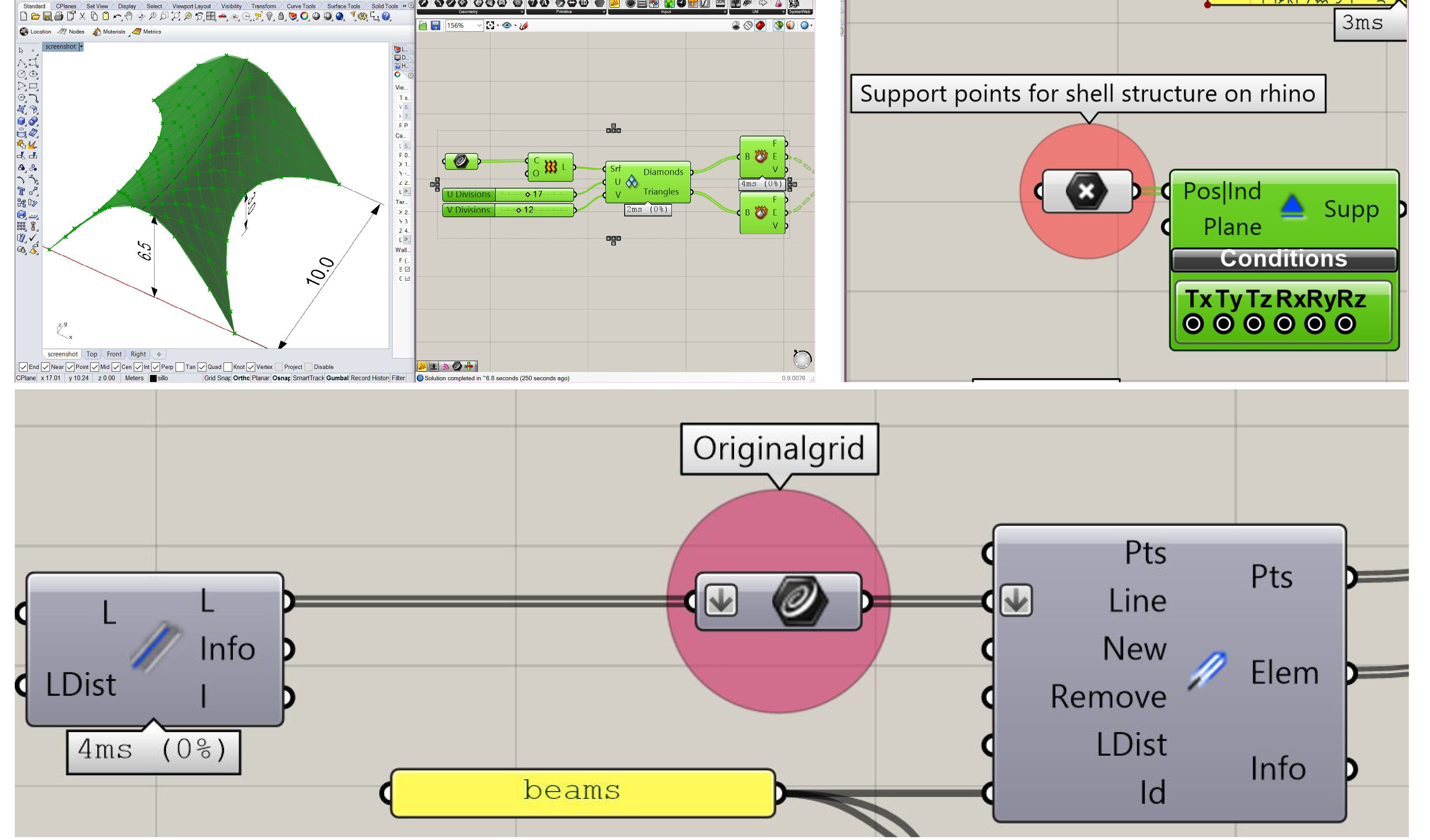
Deconstructing the grid so each segment can be analyzed in Karamba as individual beam members using the line to beam component with its own respective cross section and material. The support points are the four corner support end of the geometry.
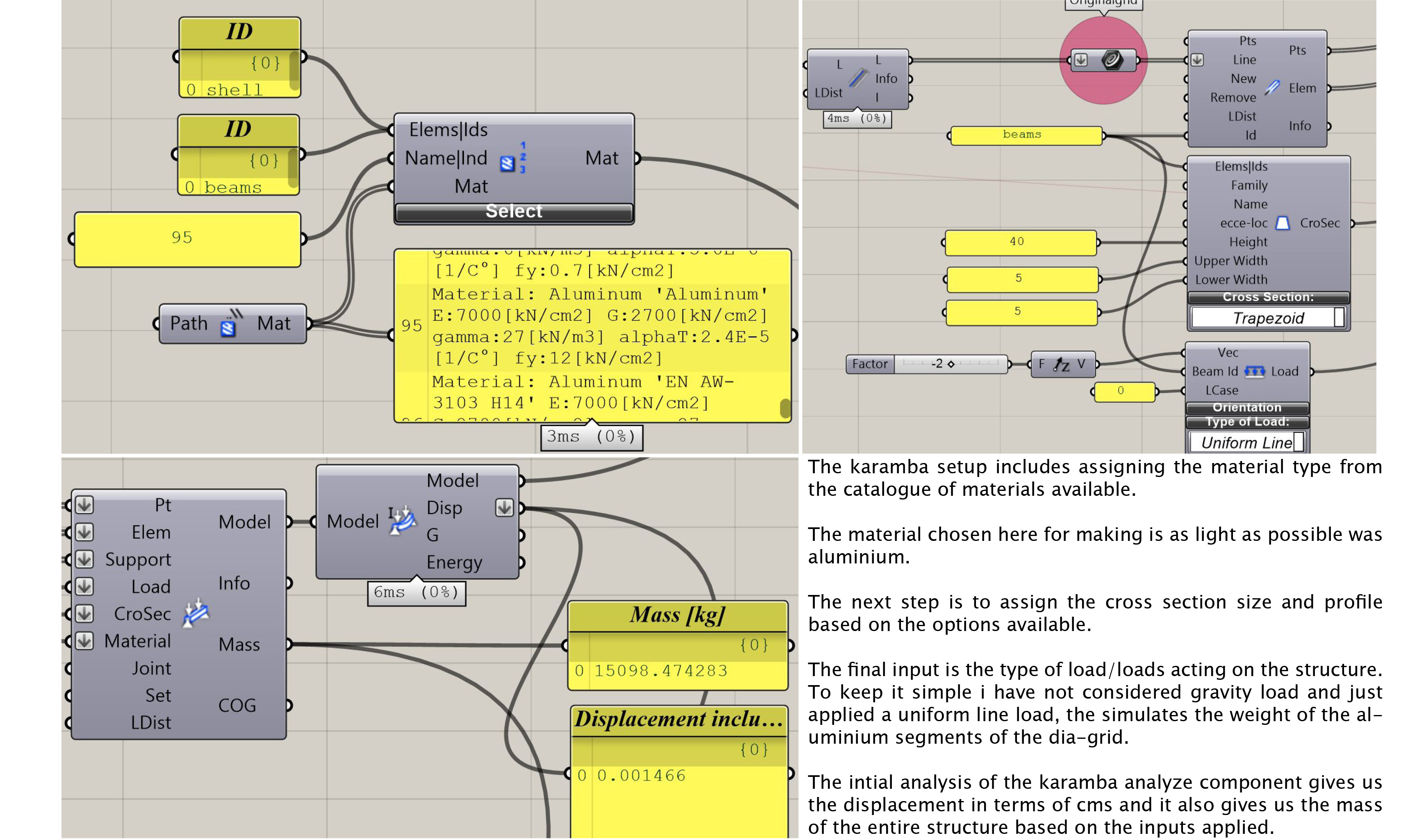
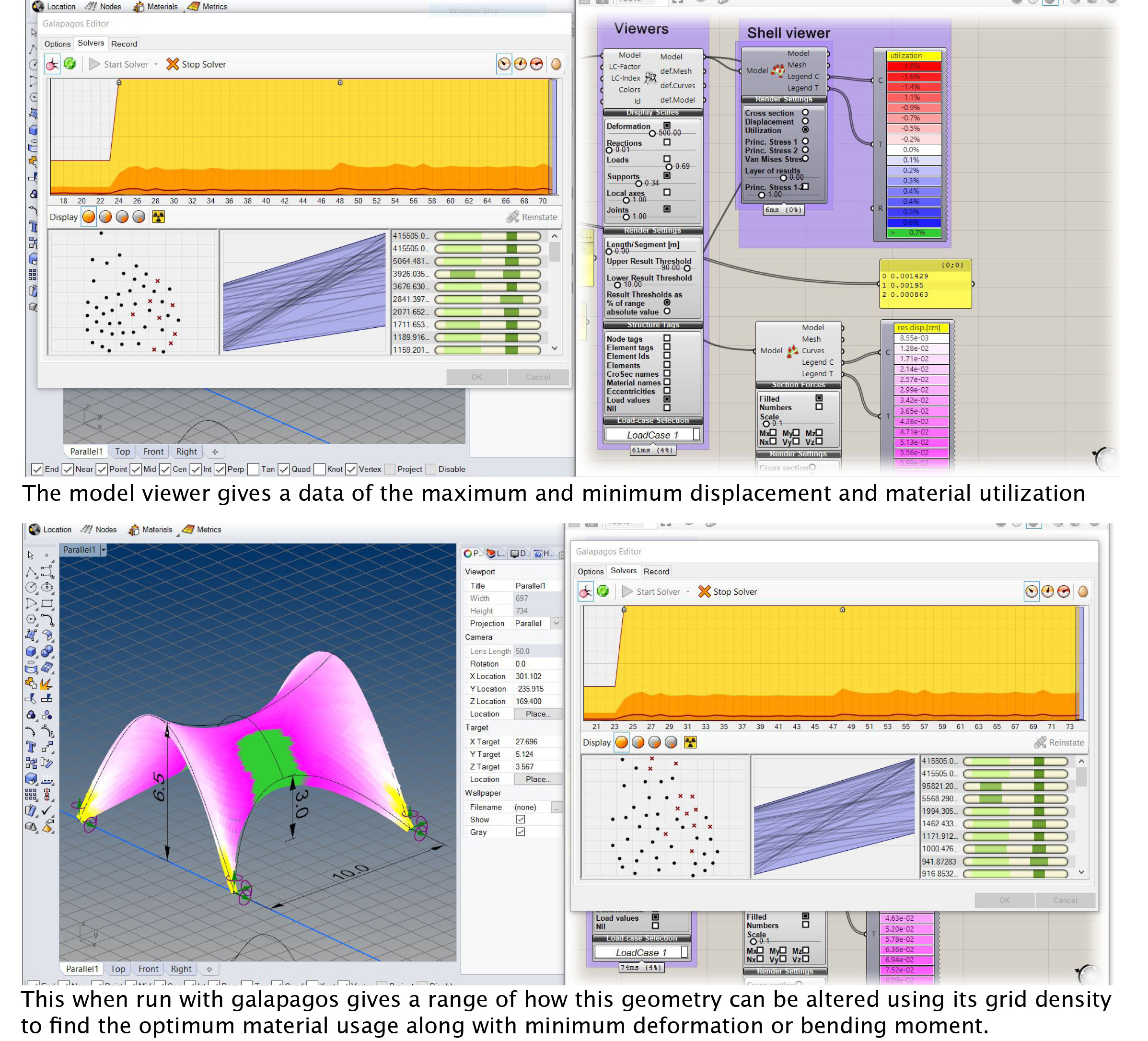
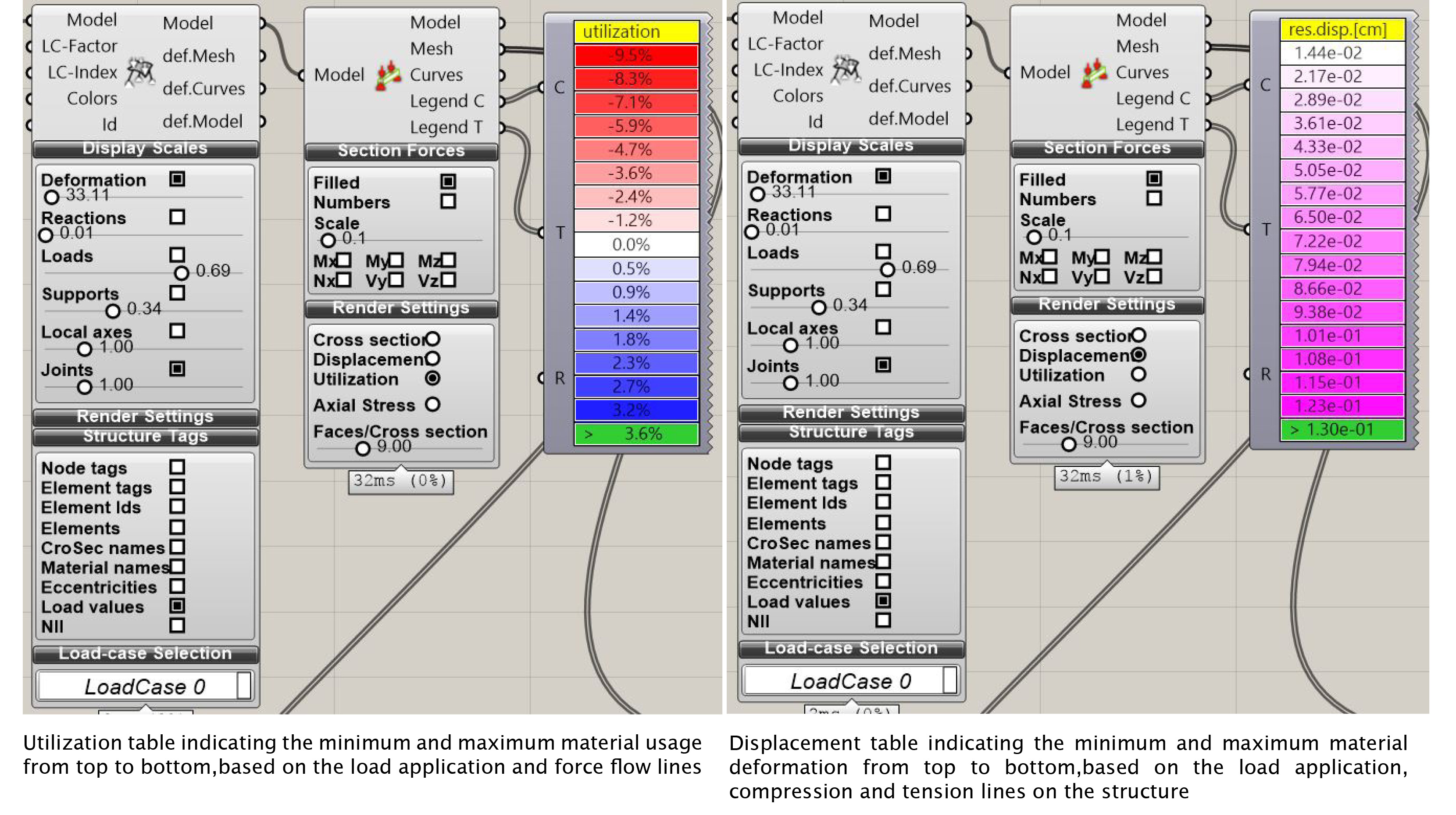
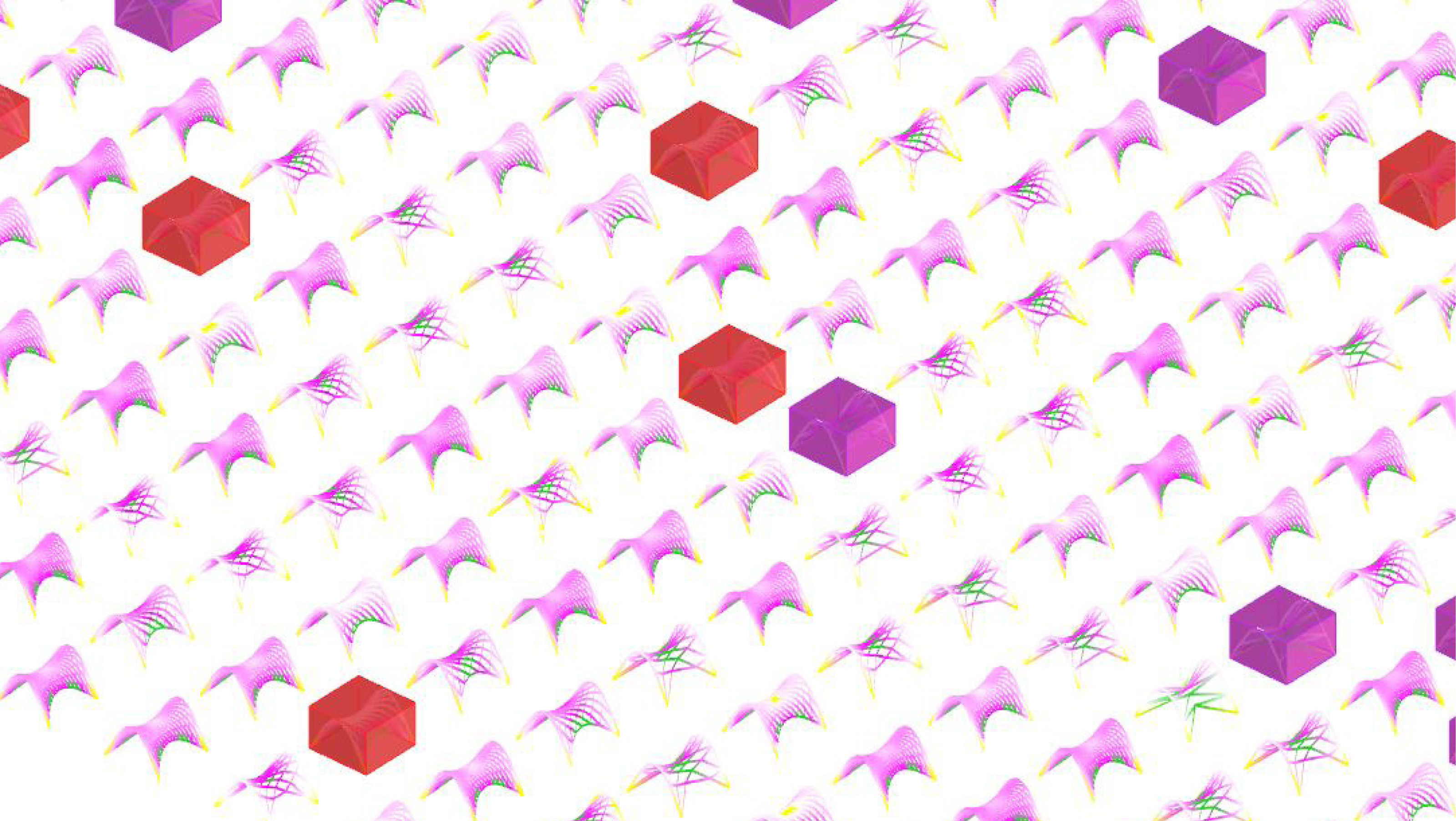
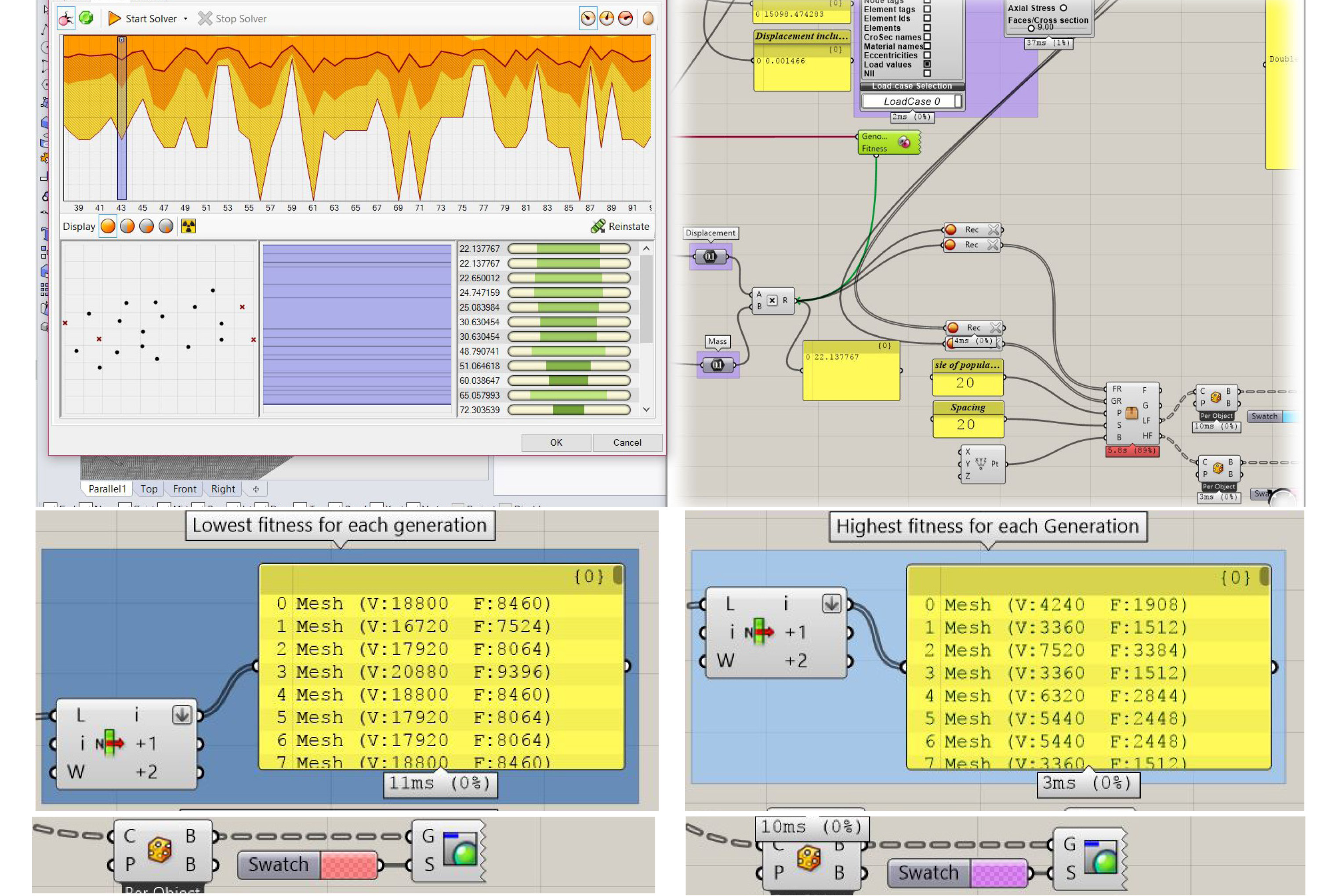
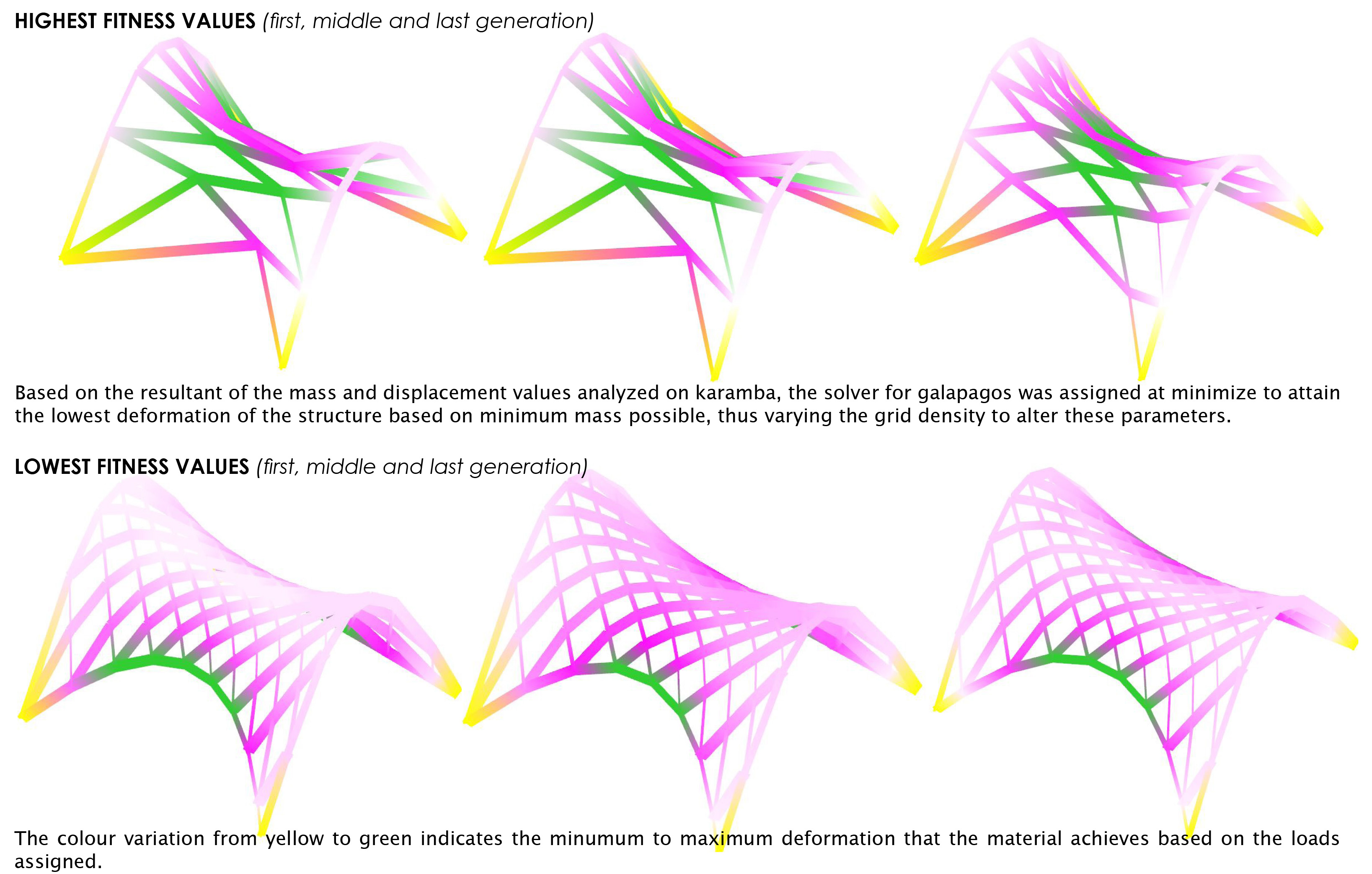
This combination of Karamba and Galapagos can help optimize material usage, structural stability, form finding and precise structural performance in terms of the output required. These 6 cases, if further resolved, will give results for displacement and utilization for each of the cases and give the possibility of detailed analysis for geometry.
This increases the prospects in terms of structural analysis with freedom to control any parameter, as each can affect the structure in many ways, hence understanding the importance of each input we apply to any structure.
Evolutionary Solutions is a project of IaaC, Institute for Advanced Architecture of Catalonia developed at Master in Advanced Architecture in 2016 by:
Student: Tanuj Thomas
Faculty: Luis Fraguada / Rodrigo Aguirre